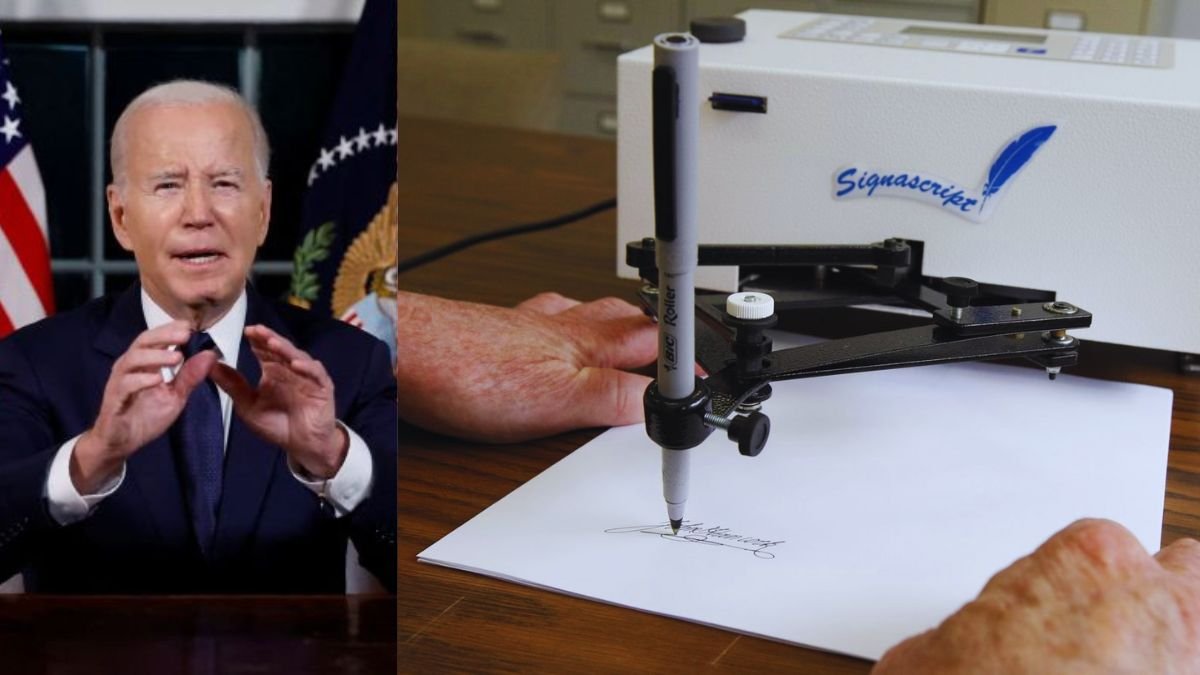Washington, D.C. – In a recent development, former President Donald Trump has declared that several pardons issued by President Joe Biden are “void and vacant,” alleging that they were signed using an autopen rather than by Biden’s own hand. This assertion has sparked a legal debate regarding the legitimacy of autopen-signed documents and the broader implications for presidential authority.
The Autopen: A Brief Overview
An autopen is a mechanical device designed to replicate a person’s signature. It has been employed for decades by various public figures, including U.S. presidents, to sign documents when physically unavailable. The device ensures consistency in signatures and facilitates the timely signing of numerous documents. According to The Associated Press, presidents such as Harry Truman, Dwight D. Eisenhower, and Barack Obama have utilized the autopen for specific official documents.
Trump’s Allegations
Trump’s contention centers on the claim that President Biden’s use of the autopen for signing pardons renders those pardons invalid. He argues that the lack of a personal, handwritten signature from the sitting president undermines the authenticity and legality of the pardons. This perspective challenges longstanding practices and raises questions about the boundaries of presidential authority and the tools used to exercise it.
Legal Perspectives on Autopen Use
Legal experts have weighed in on the controversy, largely dismissing the notion that autopen-signed documents lack validity. The Associated Press notes that the use of the autopen by presidents has been a common practice, especially when prompt action is required, and the president is not physically present to sign documents. Furthermore, the Department of Justice’s Office of Legal Counsel has previously opined that autopen signatures are legally acceptable for signing legislation, reinforcing the device’s legitimacy in executing official duties.
Historical Precedents
The use of the autopen by U.S. presidents is well-documented. For instance, President Barack Obama authorized the use of an autopen to sign an extension of the Patriot Act while he was in France. Similarly, President George W. Bush sought and received a favorable opinion from the Department of Justice regarding the constitutionality of using the autopen, although he did not personally use it. These precedents suggest a historical acceptance of the autopen’s role in facilitating presidential duties.
Implications for Current Pardons
Given the historical and legal acceptance of the autopen, the validity of President Biden’s pardons is likely to withstand legal scrutiny. The argument that autopen-signed documents are inherently void lacks substantial legal backing, and courts have not previously invalidated such documents on these grounds. Therefore, unless new legal interpretations emerge, the pardons in question are expected to remain in effect.
Conclusion
The debate ignited by President Trump’s assertions brings attention to the tools and practices utilized within the highest office of the United States. While the autopen may seem like a modern convenience, its use is deeply rooted in the practicalities of governance, ensuring the continuity of administrative functions even in the president’s physical absence. As the discussion unfolds, it underscores the balance between tradition, technological advancement, and legal interpretation in the execution of presidential duties.





